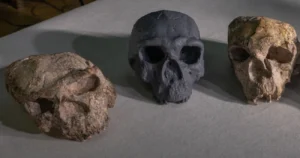Lost for 20 Years, the World’s Smallest Snake Has Been Found Alive in Barbados
Scientists announced a happy surprise. The world’s smallest threadsnake, long thought lost, was rediscovered. It was found during a field survey on March 20, 2025

July 24, 2025, Barbados — Scientists announced a happy surprise. The world’s smallest threadsnake, long thought lost, was rediscovered. It was found during a field survey on March 20, 2025. The tiny snake was seen under a rock in a small patch of forest.
Barbados – A tiny snake with a big story
The snake is called the Barbados threadsnake. Its scientific name is Tetracheilostoma carlae. It was first recognised as a species by scientist S. Blair Hedges in 2008. The animal holds the title of the world’s smallest-known snake.

When fully grown, it measures only about 3–4 inches (9–10 cm). It is as thin as a strand of spaghetti.
How it was found
Researchers from the Barbados Ministry of the Environment and the conservation group Re: wild led the search.
On the morning of March 20, Connor Blades and Justin Springer were turning over rocks near a jack-in-the-box tree. Under one rock, they saw the threadsnake. Because it is so small and secretive, they placed it in a small jar and later examined it under a microscope at the University of the West Indies.
A clear video frame and the tiny head scale helped confirm its identity.
Why the snake vanished from sight
The threadsnake is blind and lives mostly underground. It eats ants and termites. It also lays only one slender egg at a time. These habits make it hard to find. Scientists had not verified a sighting for almost 20 years.
For that reason, many feared it was extinct. But gaps in records can simply mean the animal is rare and secretive. Focused searches in the right microhabitats can still find such species.
The identification challenge
The Barbados threadsnake looks similar to an invasive species called the Brahminy blind snake. That species is more common and often confuses people in the field. To separate them, researchers used close microscope checks.
The threadsnake shows pale orange dorsal lines and a special scale on the nose. These small details clinched the identification. Experts then verified the sighting with photos and lab checks.
What this rediscovery means
The find moves the snake off the list of species that were “lost to science.” Re: wild had included it among nearly 4,800 organisms with no recent records.
Now scientists can plan better surveys. They can map the few moist forest pockets where the snake might still survive. The rediscovery is also an urgent reminder. It shows why small, hidden animals need habitat protection.
Big threats on a small island
Barbados has lost most of its original forest. Conservationists say about 98% of the primary forest was cleared long ago. This leaves only small fragments of habitat.
Such fragmentation makes it hard for rare species to find mates. It also raises the risk from invasive animals and human disturbance. Experts hope the threadsnake will become a symbol to protect these last forest patches.
What comes next
Researchers plan more careful surveys. They will work with local communities. They will teach people how to spot and record tiny wildlife without harming it. Scientists also want funding to protect key microhabitats. For an animal just a few centimetres long, even a few acres of safe ground can matter a lot.
Final word
The rediscovery of the Barbados threadsnake is small in size but large in message. It tells us that even creatures we think are gone can still survive. It also shows the power of patient fieldwork. For India’s readers, the story is a clear lesson. Protect the last patches of habitat. Look carefully. Conservation can still deliver surprises.











Leave a Reply